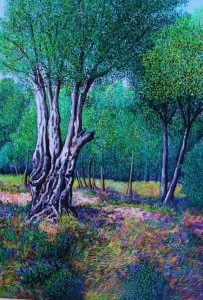The Ecological Magic of Trees

So what’s the big deal about planting trees? Simply put, it buys us time. A tree sequesters about one ton of CO2 by the time it reaches its 40th birthday, and a lot can happen in terms of improved technology in that period of time. (This, btw, is the game being played by many cancer patients: stay alive and hope for new technology. It’s not ideal, but it’s the best course available.)
The pic above is yet one more by Italy’s amazing Maurizio Rega. He loves trees, and it’s hard not to love him in return.

Craig,
Don’t get me wrong, I like trees! However, planting trees needs a good deal of thought.
While trees to sequestrate some carbon, trees under certain conditions emit both methane and CO2.
Trees in mono-culture, especially some species can be very ecologically and environmentally harmful. One of the most popular trees to grow is the fast growing Eucalyptuses family from Australia.
But these trees deplete groundwater, invade natural grassland, and acidify and erode topsoil preventing other species, while emitting methane and promoting forest and grass fires. The loss of diversity is very detrimental.
Just because you can plant a tree somewhere doesn’t mean you should ! This lesson should have been learned from Uruguay’s painful experience with ideologically driven three planting policies.
Stressed trees emit CO2 and methane at much higher rates than previously thought. No one is quite sure why many tree species have quadrupled production of methane over the last 80-130 years.
So yeas, trees are indeed beautiful, but care should be taken when considering a species.